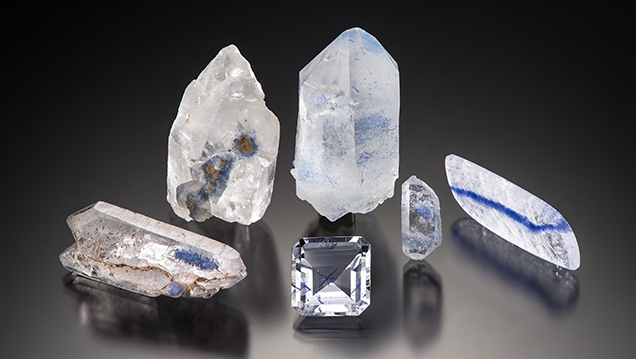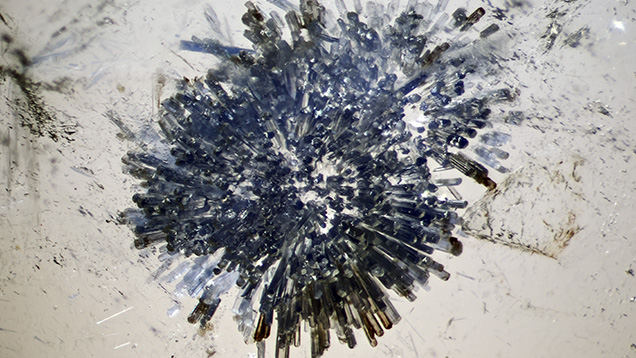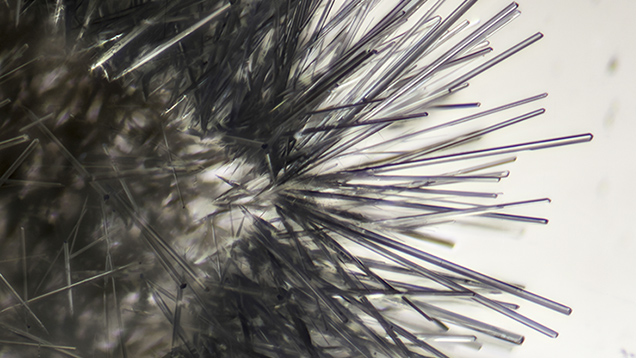Dumortierite In Rock Crystal Quartz


Figure 2. Clusters of vibrant blue acicular dumortierite were observed in this rock crystal quartz. Note that some dumortierite crystals are brownish due to epigenetic mineral staining along the interface of the quartz host and the dumortierite inclusions. Photomicrograph by Nathan Renfro; horizontal field of view 7.38 mm.
Much of the material examined by the authors showed phantom planes and clusters of acicular needles with a vibrant blue coloration (figure 2). Polarized light revealed very strong blue to colorless pleochroism in the blue mineral inclusions. Raman analysis confirmed the identity of the needles as dumortierite. Also observed in one sample were colorless acicular crystals on a phantom plane, which were also identified by Raman as dumortierite (figure 3).
Figure 3. Unusual pale blue to colorless needles of dumortierite were also observed in the rock crystal quartz. Photomicrograph by Nathan Renfro; horizontal field of view 2.24 mm.
Blue color in dumortierite has previously been reported to be caused mainly by Fe2+-Ti4+ charge-transfer (see http://minerals.gps.caltech.edu/FILES/Visible/dumortierite/Index.htm). The chemical composition of the blue and colorless dumortierite inclusions was analyzed by LA-ICP-MS to look for any prominent differences that might explain the variance in observed color. The most significant difference was in the magnesium content, which was almost 10 times higher in the colorless dumortierite inclusions (1070 ppma, compared to 127 ppma Mg in the blue dumortierite). While more research is needed to fully understand the role this higher magnesium content has on color, the authors speculate that the titanium preferentially charge-compensates with magnesium instead of iron. If there is not enough excess titanium relative to magnesium, it may not be possible for titanium to pair with divalent iron, and this would prevent the formation of blue color.These are the first examples of prismatic blue and colorless dumortierite inclusions in rock crystal quartz we have encountered.



